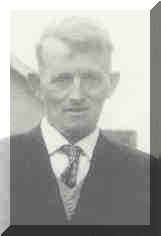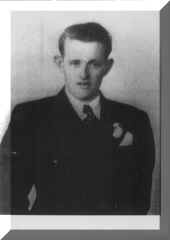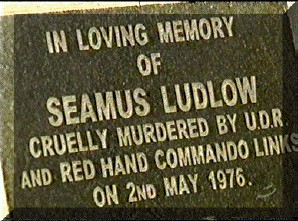The Murder of Seamus Ludlow in County Louth, May 1976. Towards a public inquiry?



The Murder of Seamus Ludlow in County Louth, May 1976. Towards a public inquiry?
|
|
Introduction to the murder of Seamus Ludlow and the official cover-up. Michael Cunningham investigation - 1978 The recent Campaign for Truth and Justice. Irish Victims Commission Report. Ludlow family's questions for the RUC (now the PSNI). Jim J. Kane's letter to the N I Human Rights Commission. Jim J. Kane's letter to the RUC Ludlow Family Letter to Bertie Ahern Other Ludlow Family Sites. |
The Examiner, 25 May 1999: Ludlow inquiry to be announced The Irish Government is expected to announce an inquiry into the 1976 murder of County Louth man Seamus Ludlow amid growing allegations of collusion involving the Garda and security forces in the North. No-one has ever been charged with the murder of 47 year old forestry worker close to his border home in May 1976. But it is widely believed that loyalists were behind his death and that a cover-up was mounted for two decades by authorities north and south of the border because of alleged involvement by members of the security forces and one of their agents. For years Gardai had told the family they believed Mr Ludlow was murdered by the IRA, a claim the republican organisation has always denied. In late 1997 however Mr Ludlow's relatives were told that the authorities had probably known the identities of the real killers as long before as 1979. The investigation was reopened and last February four men were arrested by the RUC and questioned in Belfast for six days. They were all released without charge and a file sent to the DPP in the North for consideration. A decision on whether or not to prosecute has still not been made public. One of those questioned the case later claimed that the three men actually involved in the murder included two serving UDR officers who were also members of the Red Hand Commandos. Mr Ludlow's killer, it was alleged, had been involved in a string of other murders carried out by the paramilitary group. The man also revealed that he was interviewed by RUC Special Branch in 1987 but that they already appeared to know the details of the murder. Mr Ludlow was last seen hitching a lift around midnight on May 1st 1976 after leaving the Lisdoo Arms in Dundalk. His body was found the following day, dumped in a lane at Culfore just half a mile from his home. He had been shot at point blank range three times in the chest. Human rights organization British Irish Rights Watch has supported calls for a public inquiry and, in a detailed report published in February, demanded answers to a number of questions about the murder. These included why the initial Garda investigation stopped suddenly after three weeks, why the family were excluded from the inquest and exactly what information the Gardai held about the murder and for how long. The organization wrote to Taoiseach Bertie Ahern about the mater last week. Its director Jane Winter said that a full inquiry would be a momentous step forward as it would be the first time the Irish Government has examined allegations of collusion within the Garda. But she said it must be a public judicial inquiry with extensive powers to fully investigate the family's suspicions. The family should be allowed legal representation and legal aid if necessary, while the Garda report should be disclosed, she added.
I Homepage I I Top I I Press Coverage I |